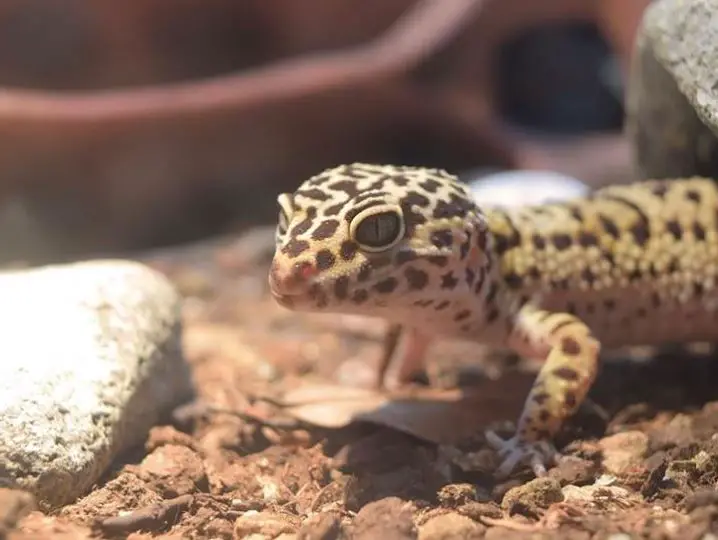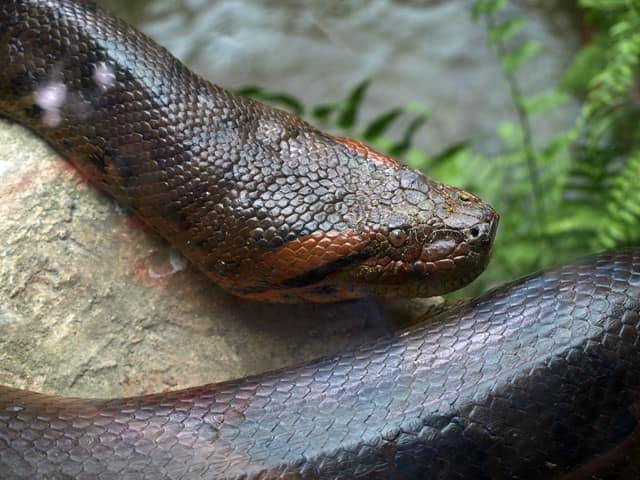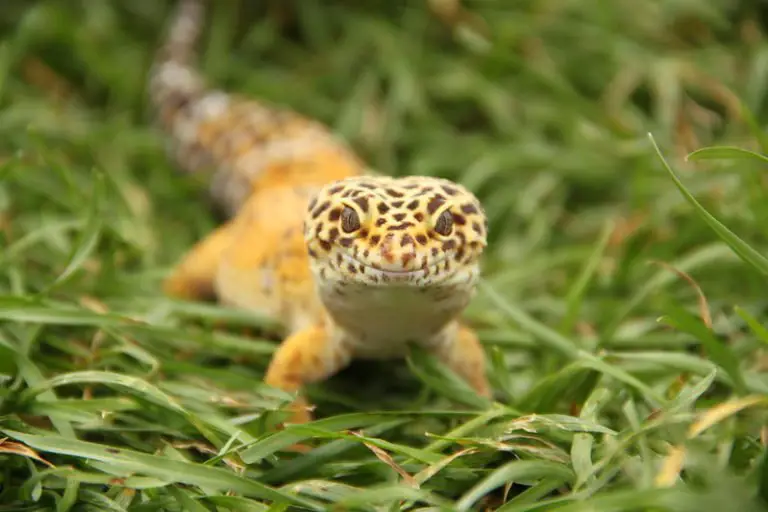Is Coconut Fiber Safe For Leopard Geckos? (Solved)

Coconut fiber is one of the most widely used natural substrates as a base for terrariums and pet beds, it has a wide variety of biological and physical properties that make it a safe and appropriate material to be used as a terrarium base.
But let’s talk specifically in the case of leopard geckos, coconut fiber is used safely as a terrarium for leopard geckos by many people around the world, but there is concern and controversy regarding some reports of leopard geckos that have been seriously harmed by ingesting coconut fiber.
And yes, it is true that leopard geckos are used to ingest a little substrate but coconut fiber is totally harmless, it is not toxic, breathable and if used as a carpet for the terrarium of the leopard gecko will be much more difficult to ingest so it is totally safe to use.
When coconut fiber is used in the form of carpet for the leopard gecko terrarium, it fulfills the essential functions of a safe, firm substrate (so that the gecko does not eat it), does not sink and cannot dig, although in reality a healthy leopard gecko rarely eats, and when it does it ingests very small amounts to be considered harmful to its health.
The coconut fiber is a material with a great absorbent capacity and is not abrasive so it is quite soft and does not irritate or bother the skin of leopard geckos.
You should use a coconut fiber mat as substrate
It is known that coconut fiber as a substrate can be used in several ways, and that coconut fiber is a naturally available and loose material, but in the case of leopard geckos, the ideal is to use a firm and compact coconut fiber mat, this is due to the fact that leopard geckos do not like to walk on very soft soil where they can sink.
This is understandable and totally natural in a leopard gecko, its natural environment is an arid and sandy climate, the natural subsoil is earthy-sandy, more firm than loose, silty, interspersed with debris and rocks, covered with small shrubs, barren grass, and uneven, the ideal is to try to recreate the natural environment of the leopard gecko in the terrarium to make it feel comfortable.
And even if the coconut fiber does not provide a sandy feel as a base, at least the fact that it is a firm and compact base will make it feel good.
these mats do not contain toxic materials that may be harmful to leopard geckos, as they have been designed specifically for the function of serving as pet substrates.
In its natural daytime environment, the leopard gecko usually stays in cool, damp and dry burrows, crevices and under rocks, so a coconut fiber substrate helps to simulate this environment as it is a cool material and can maintain a good level of humidity in the terrarium.
Why do leopard geckos usually eat substrate?
Leopard geckos are accustomed to eating substrate because, in the wild, they meet their mineral needs through food and by ingesting a small amount of soil.
If an animal living in captivity has such a deficiency, it will behave quite naturally and eat the soil if no mineral source is available. The leopard gecko will need important minerals other than calcium that need to be ingested.
And what does the leopard gecko do? He eats the ground, in small quantities, this is not bad either, as long as round-grained sand has been used. If it has sharp edges, such as quartz sand, the sand grains open the digestive tract and injure the animal so badly that it bleeds to death internally.
This is something that does not happen with coconut fiber substrate, because the leopard gecko is accustomed to eating soil to supply minerals, plus the physical composition of coconut fiber and sand is totally different.
Leopard geckos by nature are more prone to eat soil than any other substrate, behind this behavior of eating soil when practiced compulsively, hides a nutrient deficiency so it is advisable not to neglect the feeding and supplementation of minerals for the leopard gecko.
Cons of using coconut fiber as a substrate for leopard geckos
Some leopard gecko keepers believe that using coconut fiber as a substrate has ultimately given the gecko a slightly darker shade. Some believe that the leopard gecko has the ability to adapt the coloration of its environment, which makes sense due to its natural ability to mimic.
Therefore, by using a coconut fiber substrate, whose color is dark brown, the color of the gecko over time could become darker, this is not that it is harmful, but for aesthetic reasons, some people do not find it pleasant.
Another important detail to highlight is, as I mentioned previously in the topic, if the coconut fiber is used in its natural form, loose, it will be an uncomfortable substrate for the leopard gecko, the ideal is to use a compact carpet of coconut fiber, this is easy to get, they sell them on Amazon or any other pet store.
Coconut fiber also tends to absorb a lot of moisture, special care should be taken, it is recommended when using coconut fiber carpet to use a sheet of waterproof tin underneath to make the carpet more durable and resistant to moisture.
Which substrates should not be used for leopard geckos?
Any kind of substrate that could be ingested by accident is not advisable. If it is composed of small pieces, the gecko may eat it and generate a blockage (impaction) in its digestive system. The substrates that we should avoid are:
Pine bark, besides being able to cause impaction, is usually toxic for most reptiles.
Coconut shells, humus, or other types of shells such as walnut shells, for the same reason, in case it is ingested it could be very harmful to their health and cause damage.
Sand (calcium sand, silica sand), is the substrate material that geckos can eat more easily, due to the texture and dust the sand can cause obstruction problems in the stomach of the gecko.







